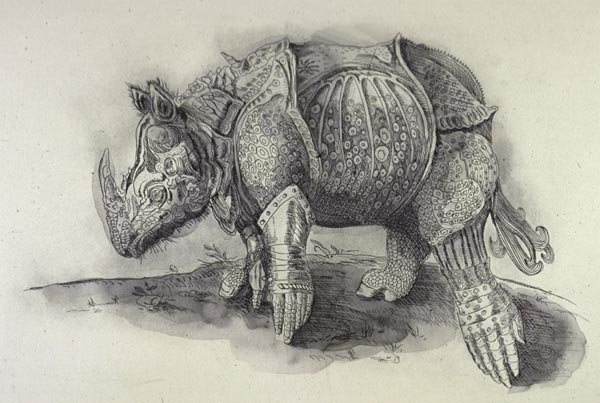
Reversed Rhinoceros, after AD One of the most enduring natural history documents comes from the hand, again, of Albrecht Durer, his Rhinoceros of 1515. As the story goes, Durer never actually saw the live or dead animal, but instead worked from a quick sketch and brief written description by a Portuguese artist who had seen the animal in Lisbon the same year. Because Durer never saw the animal, he exaggerated some of the features described to him, such as the armor-like plating of the skin. At the time, there was an enormous cultural appetite for pictures of new creatures from exotic lands, and Durer’s woodcut was much in demand and subsequently copied and recopied long after his death. This lead to a continued exaggeration of features, seen in the armour plating. Over the course of the next several hundred years, versions of Durer’s Rhinoceros appeared in encyclopedias and natural history publications by Conrad Gessner, Edward Topsell, Gaspar Schott and Albert Seba; each time becoming more armored and fantastic. (Ford, Brian J., Images of Science: A History of Scientific Illustration, Oxford University Press, New York, 1993). To comment on this phenomenon – the enduring power of the visual document and the transformation of information, I created my own version of the Rhinoceros. However in this case, I made the transformation to armor complete, by adding actual gauntlets to the animal’s feet. The title is Reversed Rhinoceros with gauntlets, after A.D. I purposely reversed the direction the animal was facing from the original Durer woodcut to signal a comment on the usual manner in which copies are done; the original is simply traced and printed, but in printing the image then appears reversed. The next time someone copies the copy, it will appear in the same orientation as the original, and so on. My print is created as a copper plate etching with added ink washes, and is larger than the original Durer image, mine measuring 12” x 16.” |